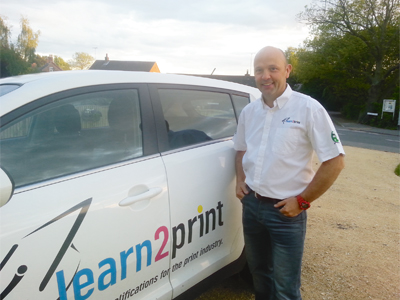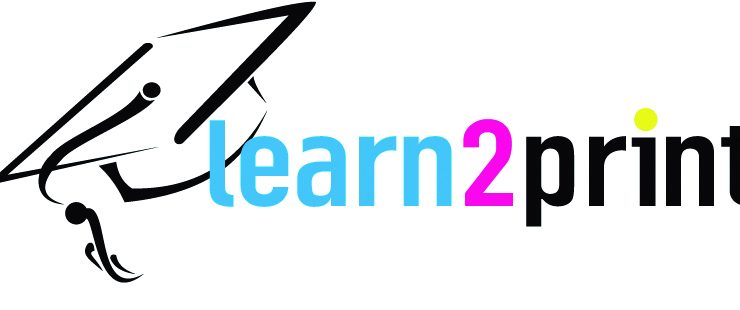Following the decimation of print training in the UK, Learn2print was created to try to help fill the need. Six years later, it is going from strength to strength.
From his position working on the print courses at Leicester College, Jon Bray saw the steady erosion of education for the UK’s print industry. He remembers a time when there were probably in excess of 30 establishments throughout the country where print firms could send their young intake to learn the job. It has almost all disappeared.
Six years ago, as cuts deepend, he left Leicester College but he was fired up to find a way to deliver training. ‘I had seen everything disappear from education in the UK and my vision was to rebuild the training industry for print here,’ he said. ‘I set up Learn2print and we have now got 13 classes running nationally.’
Things are now growing quite steadily for Learn2print, with 40% more enrolling this year than last. It has been helped somewhat by the Government’s targets on apprenticeships, but also through its own attempts to raise awareness. It is this last factor which is still top of the agenda. There is plenty of appetite for training in the industry, he believes, but people just do not know from where they can get it. Even then, the problem extends all the way back school years, he believes.
‘Printers want the education,’ he continued. ‘They want to invest in apprentices and David Cameron is trying to meet his quota so he’s pushing them, but the biggest problem is that as people are growing up they are never told about the print industry in school.’

Jon Bray of Learn 2 Print
There is, of course, PrintIT! – the Proskills initiative aimed at inspiring young people in schools to become interested in a career in print and its related sectors. It has been running for more than a decade now and is judged to have been generally quite successful. Learn2print has become a sponsor of PrintIT! but Mr Bray does see a particular problem within it.
‘It’s okay trying to educate youngsters in schools but if teachers don’t know about the print industry in the first place, you hit a barrier straight away,’ he said. ‘So, from January we will work with PrintIT! to teach the teachers on the basic principles of the print industry, including digital. They will come and do a day’s development with us. The staff don’t know any more than the students so we want to educate the staff first. As it is, print is not part of the curriculum and until it is and we can make it exciting, we are limited in the number of people that we can get involved in PrintIT!. Working with Proskills, it is our plan to try and push it into schools and encourage this more.’
Learn2print is now delivering 13 monthly regional classes: Barnard Castle (County Durham), Burton on Trent, Carlisle, Crewe, Exeter, Kettering, Kings Lynn, Leeds, London (Walthamstow), Newcastle upon Tyne, Peterborough, Plymouth and Scarborough. It has around 90 students per year going through Level 2 and 3 apprenticeships, which are marketed by the colleges through their prospectuses. The college draws down funding from the Skills Funding Agency, while Learn2print delivers classroom-based education through five full time tutors, and works with local print providers to deliver the practical skills side of the apprenticeships. Higher level apprenticeships are also available but these are not centrally funded, so those interested are better off accessing these through the BPIF, which does have central funding for Level 4 apprenticeships.
While the apprenticeship schemes are the bread and butter for Learn2print, the organisation is also able to offer a range of additional print training courses on a bespoke basis for companies. Its tutors are all specialists in different fields of the industry and have tutored in colleges that have been forced to close down their print courses.
The plan going forward for Jon Bray is to keep expanding, adding tutors and classes if and when necessary, and continuing to try to raise awareness of Learn2print. For the industry itself, he has the following advice:
‘My first question is always: have you thought about how many people will be retiring and in what areas of the production process in the next five years? That experience needs to be disseminated to new blood. Let’s get these new people in, get them under the wing of the old ones and share that information so that they have the skills. That has got to happen and it has not been happening.’





